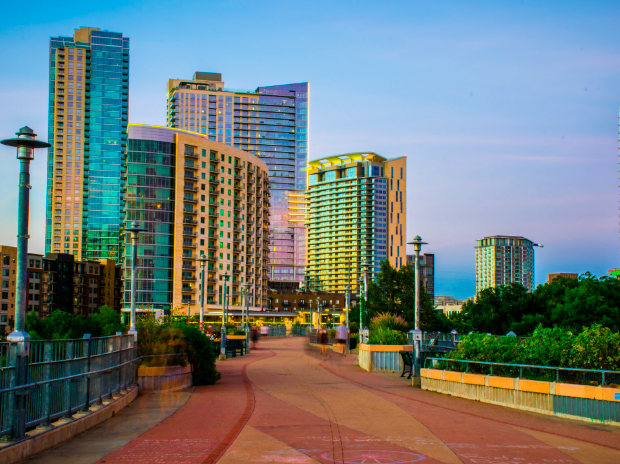Anew report demonstrates that downtown Austin isn’t just for workers, tourists, partiers, and diners anymore.
The population of downtown Austin has surged from 4,222 in 1990 and 7,635 in 2010 to 13,648 in 2020, according to the report, released by the Downtown Austin Alliance. That translates into a 223 percent population spike between 1990 and 2020 and a 79 percent jump from 2010 to 2020.
Today, the population of downtown Austin roughly equates to the population of Manor, a Travis County suburb.
To accommodate the escalating population of downtown Austin, real estate developers have bulked up the housing supply there.

In 1990, just 948 housing units were located downtown, according to the report. That number grew to 5,670 in 2010 and 9,447 in 2020. In other words, the downtown housing supply spiked a whopping 897 percent between 1990 and 2020 and a far more modest 67 percent from 2010 to 2020.
“As one of the hottest Austin residential markets, downtown continues to evolve as it serves Austin’s diverse population,” the report says.
The downtown residential market is poised to keep evolving as more office buildings rise in downtown Austin. According to the report, 11 office projects are under construction downtown, and another 11 have been proposed or are in the planning stages. About 106,500 people currently work downtown.
Overall, the report illustrates downtown’s contribution to Austin’s emergence as an “18-hour city.” Austin-based commercial real estate investment platform Crowdstreet explains that 18-hour cities “are defined as second-tier cities with above-average urban population growth that offer a lower cost of living and lower cost of doing business relative to first-tier or ‘24-hour’ cities.”
“Austin has shown over the last year that downtown is truly built for living, working, and playing,” the report says. “With small businesses opening their doors for visitors in the morning, workers bustling through the streets in the afternoon, and live music floating down the streets in the evening, downtown Austin is a space with vibrancy flowing through it during all hours of the day.”
The Article is from culturemap Austin, copyright belongs to owner





